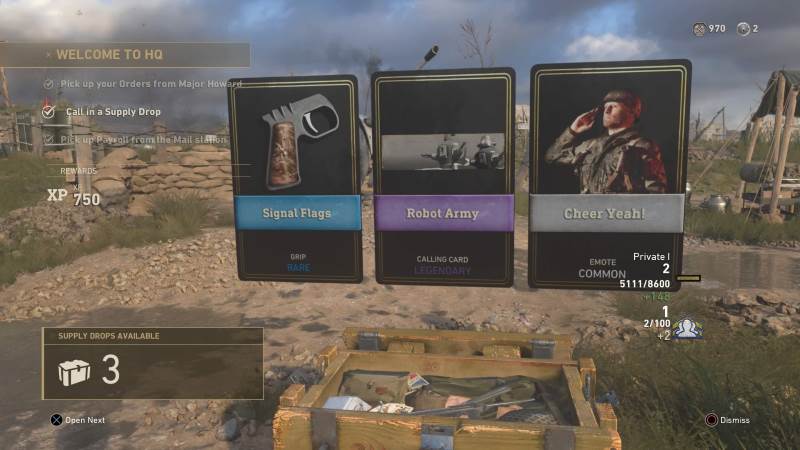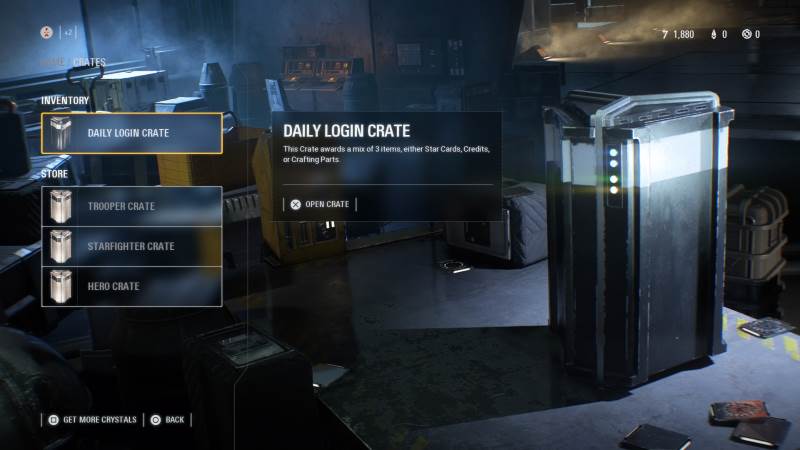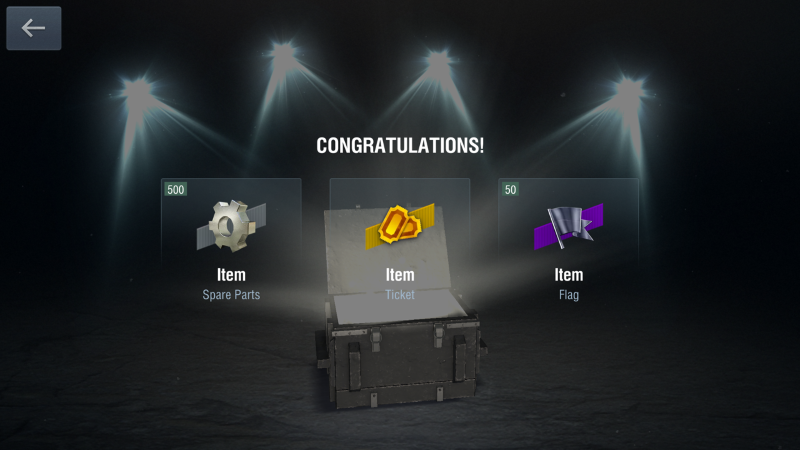Hi everyone, it’s me: The Devil. Satan. Ole Scratch. I’m happy to announce that I’m writing today’s guest post. Jamie doesn’t normally do guest posts, but I snuck up behind him with a big bottle of chloroform and bashed him over the head. It was hilarious.

Today’s guest contributor
I wanted to write this post because I’ve been hearing a lot about loot boxes lately. A lot of really exciting stuff, like how they’re teaching kids to gamble, how they’re ruining good game design, and how they prey on those susceptible to addiction. And the fan reaction to Star Wars Battlefront II was just amazing –it was the kind of monkey paw shenanigans that usually comes as an unpleasant surprise after making a deal with yours truly.
So, gaming industry, if your aim is to bring down the jackboot of government regulation on loot mechanics and destroy what was once a source of joy to millions of gamers, you’re doing a bangup job. Great progress. But I was looking through one of Jamie’s notebooks entitled “IDEAS THAT MUST NEVER BE SHARED” and it was chock full of great stuff for using some psychological tricks to get you the rest of the way there.1 So let’s dive in before he wakes up.

Festive
Trick 1: The Gambler’s Fallacy
Mortals have this weird misconception about probabilities. If you toss a fair coin three times and happen to get three heads in a row, most humans will think that there’s a higher than normal chance of getting tails on the next flip. Because the coin is “due” to come up tails. Even though each flip is a separate event that always has a 50/50 chance of being heads or tails. You all crack me up.
But game designers, you could use this quirk to make loot boxes more compelling. When gamers open a box that doesn’t contain some legendary item they’re coveting, keep track! Remind them of how many loot boxes they have opened that did NOT contain an item of that quality. After a few tries, the gambler’s fallacy will kick in and they will think their odds of getting a legendary item will have gone up. It’s like free money! For you! Not them!
Trick 2: Sunk Costs Effect
This one can be summed up as throwing good money after bad. For reasons I cannot fathom, people will use the money they’ve already wasted on gambling as a justification for spending more money on the same exact failed enterprise. They’ll sit there and cry “I can’t let all that money I’ve already spent on this be for nothing!” and they’ll shovel more legal tender into the fire. Because they think the money’s not “lost” until they give up.
So, game designers, if you want to leverage this to sell more loot boxes, you gotta remind people how much they have spent without getting a good payoff. Show it right there on the screen. Red font. Bold red font. People will be more likely to keep paying until they win what they want.
And here’s a bonus bit of evil for you: The sunk cost effect happens most often when people feel like they can recoup their losses, like in a casino. If you really want to twist the knife –and I heartily recommend twisting knives at every opportunity– offer players a chance to win back 20% of their recent expenditures when they unbox something of legendary quality or whatever. They’ll spend way more money than they’ll ever get back.

Trick 3: The Availability Heuristic
Another weird thing about mortals is that when they can more easily remember something, they think it occurs more frequently than it really does. If someone you know died from a skydiving accident (ha ha, classic) you’ll have that thought easily come to mind and you’ll overestimate how many people die from that kind of thing. And there are a whole lot of other evil, manipulative ways you can make something easier to remember. Use alliteration. Set it to a catchy jingle. Tell an interesting story about it. Make it personal to them. Or maybe simplest of all, just shove it in front of their faces over and over again and make ’em look at it constantly. Any way you do it, they’ll overestimate how often it happens in the real world.
You can use this availability heuristic to sell more loot boxes by constantly showing other players opening them and getting the good stuff from them. Hey, I’m looking at you, Call of Duty WWII. Good hustle. But you should never show people getting junk from a loot box, only good loot. And make it conspicuous, funny, and interesting. Players will then be able to remember more instances of people getting awesome stuff from loot boxes thanks to the repetition and fun animations. And then because of the availability heuristic, they’ll overestimate their chances of also winning.
Trick 4: The Illusion of Control
This one is dead simple and will pay great dividends. People tend to think they have some control over random events because their tiny human minds can’t accept the idea of a cold, indifferent cosmos.2 Casinos long ago discovered that if they let players make some kind of meaningless choice or tap a button to potentially “nudge” a slot machine reel into a winning position, they would love it and gamble more. Even when the odds of winning are held constant.
You could totally do this with loot boxes, too. Instead of clicking on a loot box to open it, let them choose between three boxes, all of which in reality have the same contents. But they don’t know that. Because they’re dumb and their illusory sense of participation and control will help them feel a sense of agency and power in their powerless situation.

Okay, we gotta wrap this up. Jamie finally woke up, saw what I was doing, and starting screaming something along the lines of “NOOOOOOOO! STOP!” So I kicked him into a pit full of rakes. Or snakes. I forget which. I think it was snakes. Either way, here’s my fifth and final trick:
Trick 5: The Near Miss Illusion
Here’s another easy one you can borrow from slot machines –which by the way is GREAT optics if your goal is to have the gaming industry slide downhill like a house caught in a mudslide. If people feel like they almost won, they’re more likely to keep gambling. Seriously, they’ve done studies where people almost get the right picture on a slot machine or the right card in a poker hand, and they go back for more, more often.3
For loot boxes, this is pretty straightforward. Just add in some kind of animation to the process of opening the loot box that shows a flurry of rewards that finally settles or coalesces into what the player gets. Then make sure you show them almost getting something good before giving them a common spray or a dumb player icon something. Only don’t do it every time. They might catch on.

Well, Jamie has almost clawed his way to the top of the rake pit, and I’d rather not be here when he gets out. Psychologists are tricky. He already won my golden fiddle once, and I like to think that I learn from my mistakes.
Unlike you humans. Enjoy your loot boxes.



Great write-up!
Just one thing. Trick 3, second paragraph, first sentence. Stuf -> stuff.
fwiw, there are about six typos total, including one in the title itself
Ugh, thanks guys. I wrote this in a app that didn’t have spellcheck and I didn’t proof it carefully enough. I think I fixed them all.
And here’s a bonus bit of evil for you: The sunk coss (cost) effect
For loot boxes, this is pretty staight (straight) forward.
I love this post. I do marketplace and currency design for games, and your summary is more concise and clear than any I have seen. Eminently shareable. I don’t use for evil, I try and get people conscious about what they are doing (though as far as moral ground is concerned my address is somewhere in the underground purgatory between Jamie and the Devil)
How come some people care about cosmetics in games and will spend money on them and some people don’t give a fuck?
The non-fuck-givers just haven’t found the right cosmetic.
Jim Jones and his kool-aid would have been a more fitting plot device than the Devil and her chloroform. Just sayin’.
In Trick 4, the different boxes don’t even have to have the same content. As long as their contents are governed by the same probability rule, players won’t, on average, get better stuff because they can choose their box. So there you have it, the same psychological trick with the same result, only you’re not even lying to the players, which might come in handy should the matter slip into the hands of some nosy judge.
Yep, that’s a really good point.
I think the devil would also show the players what they would have won if they had just picked an other box. I guess he would also cheat and show cooler loot in one of the other boxes but I wonder if that’s even necessary or people on average think that the stuff they didn’t get was the better loot.
Heck – you could have a reveal content of other boxes button and even attach a tiny cost to it once they used it ten times for maximum evil…